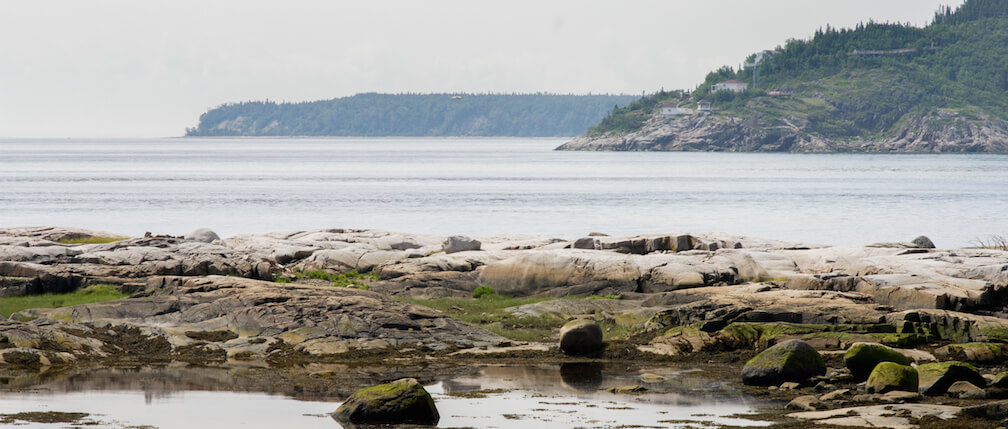During their recent mission aboard the Coriolis II, researchers observed the lowest concentrations of dissolved oxygen ever recorded in the deep waters of the St. Lawrence River. Why is there less oxygen in the deep waters and what are the consequences for the species of the St. Lawrence?
From June 12 to 21, 13 researchers from McGill, Concordia and Moncton universities plied the St. Lawrence River between Québec City and Anticosti Island aboard the Coriolis II, the research vessel of the Institute of Ocean Sciences in Rimouski (ISMER/UQAR). The multidisciplinary team had several objectives: to learn more about surface water acidification, to monitor oxygen concentrations in deep waters and to map the sediments (including petroleum products) of the seafloor.
Researchers observed an area of hypoxia, i.e., a very low oxygen zone, in the deep waters between Tadoussac and Sainte-Anne-des-Monts. The lowest concentrations were recorded off Rimouski and Matane: 45 micromoles of dissolved oxygen per kilogram of water, while concentrations are usually in the order of 200-300 micromoles per kilogram. Oxygen levels in the deep waters of the St. Lawrence have been declining for at least a decade. Researchers are concerned by this trend.
Multiple causes
There are a number of factors that might explain the magnitude of hypoxia in the St. Lawrence: the changing composition of water bodies entering the Gulf, climate change and pollution.
Two major currents of water penetrate the Gulf of St. Lawrence: the Labrador Current and the central North Atlantic Current. The water in the Labrador Current is cold and well oxygenated, while the central North Atlantic water is warmer and less oxygenated. Studies have shown that over the last few decades, the proportion of water from the Labrador Current entering the Gulf of St. Lawrence has declined, while that from the central North Atlantic has increased. This has two consequences on the deep waters of the St. Lawrence Estuary: a decrease in their oxygen concentration and an increase in their temperature.
Climate change may exacerbate hypoxia, as the higher the water temperature, the less soluble oxygen is. A study published last January by the Maurice Lamontagne Institute of Fisheries and Oceans Canada revealed that average deep water temperatures in the Gulf of St. Lawrence at depths of 250 and 300 metres have also reached levels never observed in the last hundred years.
Pollution may also play a significant role in the hypoxia phenomenon. The application of fertilizers and manure to farmland and municipal wastewater discharges contribute significant quantities of nitrates and phosphates to the river. These nutrients cause a proliferation of plankton. When the latter dies and sinks to the seabed, the decomposition process results in a depletion of the water’s oxygen content.
Implications for species of the St. Lawrence
According to Yves Gélinas, research professor at Concordia University’s Department of Chemistry and Biochemistry and one of the 13 researchers involved in the mission, some oxygen concentrations recorded at the mission “are too low to allow for the long-term survival of a number of living organisms […] in these waters”.
Indeed, just like their terrestrial counterparts, marine organisms require oxygen. But although oxygen depletion has a detrimental effect on most species, others have a different tolerance level. Cod, for example, are unable to tolerate the low oxygen concentrations currently found in the deep waters of the Estuary and avoid these areas. However, other species, such as redfish, plaice and shrimp, congregate in low oxygen areas to avoid predators.
For those St. Lawrence whales that feed on benthic prey – including belugas, sperm whales, harbour porpoises and several others – “their feeding grounds are likely to change,” points out Robert Michaud, Scientific Director of the Group for Research and Education on Marine Mammals (GREMM). How will whales adapt to these changes? Will they change their feeding grounds or the species they consume? For Robert Michaud, these issues are at the heart of the challenges we face in understanding and protecting the whales of the St. Lawrence.






